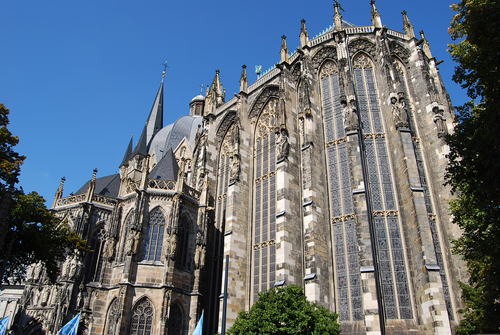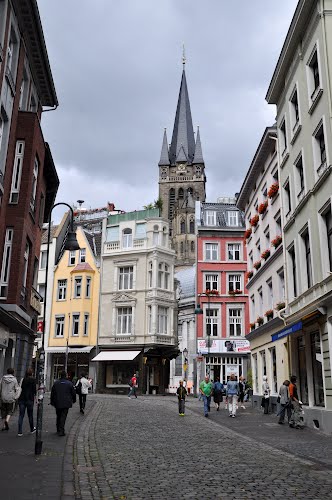Aachen Cathedral is a Roman Catholic church in Aachen, western Germany. It is the oldest cathedral in northern Europe, and was constructed by order of the Emperor Charlemagne, who was buried here after his death in 814. For 595 years, from 936 to 1531, the Aachen chapel was the church of coronation for thirty German kings and twelve queens. The church has been the episcopal seat of the Diocese of Aachen since 1802.
History
Charlemagne began the construction of the Palatine Chapel around 796, along with the building of the rest of the palace structures. The construction is credited to Odo of Metz. The exact date of completion is unclear; however, a letter from Alcuin, in 798, states that it was nearing completion, and in 805, Leo III consecrated the finished chapel. A foundry was brought to Aachen near the end of the 8th century and was utilized to cast multiple bronze pieces, from doors and the railings, to the horse and bear statues. Charlemagne was buried in the chapel in 814. It suffered a large amount of damage in a Viking raid in 881, and was restored in 983. After Frederick Barbarossa canonized Charlemagne, in 1165, the chapel became a draw for pilgrims. In order to sustain the enormous flow of pilgrims in the Gothic period a choir hall was built, in 1355, and a two-part Capella vitrea (glass chapel) which was consecrated on the 600th anniversary of Charlemagne's death. A cupola, several other chapels and a steeple were also constructed at later dates. It was restored again in 1881, when the Baroque stucco was removed. In 1978, it was one of the first 12 items to make the entry into the UNESCO list of world heritage sites, as the first German and one of the first three European historical ensembles.













